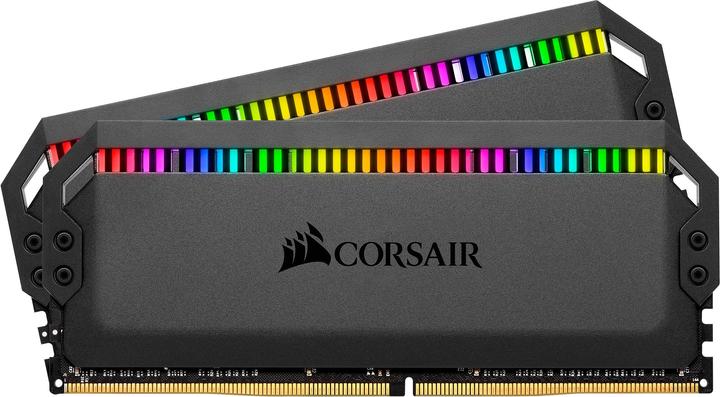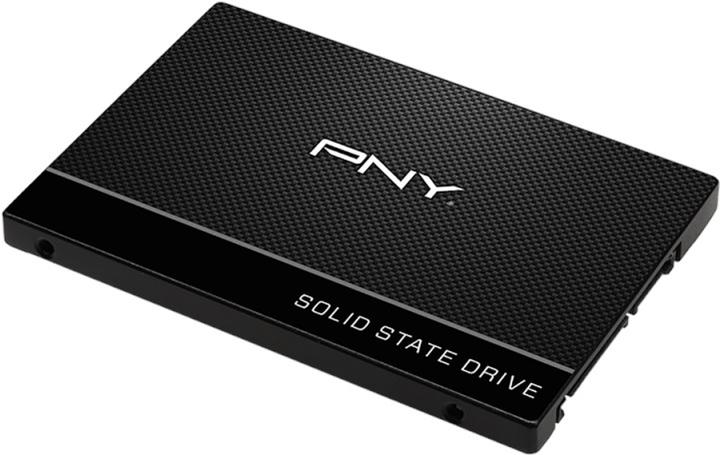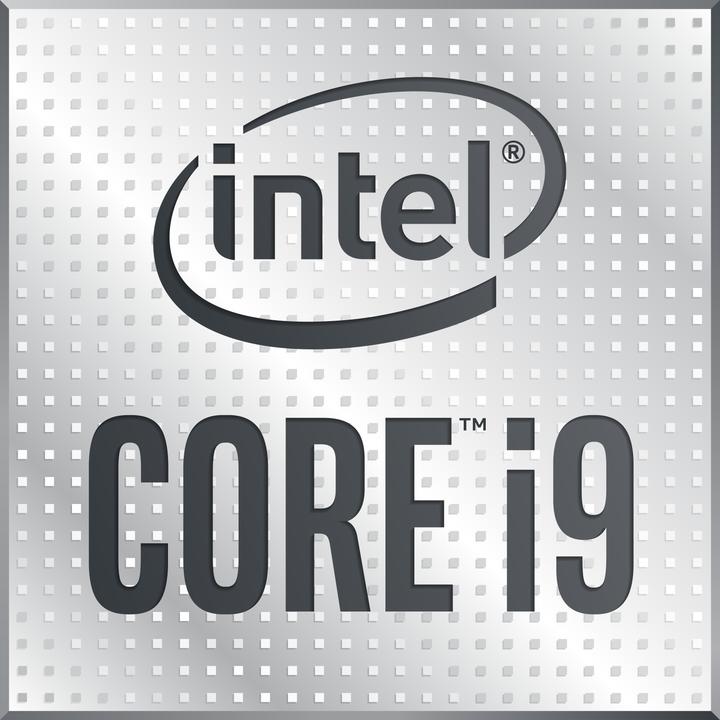

Intel i9-10850K: the more affordable gaming number one?
The 10-core Intel Core i9-10850K with 20 threads has nearly identical specifications to Intel's top product, the Core i9-10900K – currently the world's fastest gaming processor. So what does the gaming king's younger sibling have to offer?
Only 100 MHz separates the i9-10850K and the 10900K. The difference in price, however, is bigger: the 10900K costs 536 francs whereas the 10850K will set you back 481 francs (prices as of 13 October 2020). That's a disparity of 11%. The difference in availability is even greater: you can get hold of the 10850K immediately, while the 10900K is tricky to find. In fact, this issue is probably why the 10850K exists.
Problems with the availability of the 10900K are most likely due to the binning. Simply put, this is about the quality of the chip, as only the best make it into the 10900K. Presumably, Intel simply can't produce enough chips of a high enough quality. As a result, the 10850K is stepping into the breach with 100 MHz less on paper. Intel appears to be able to manufacture enough chips of this quality. If you'd like to know more about binning, I recommend this article.
The chip in detail
The i9-10850K is based on Comet Lake architecture and manufactured using the 14 nm++- process. Comet Lake is a successor to Skylake, the architecture that has underpinned all consumer desktop processors since 2015. Most performance increases are the result of additional functions and improvements to the clock speed. The Core i9-10850K is unlocked, so it has a multiplier allowing you to overclock it.
| Processor | Cores / Threads | Base / Max. boost speed (GHz) | Cache total (MB) | PCIe Lanes | TDP (Watt) | Price (as at: 13.10.2020) | Price per thread (as at: 13.10.2020) |
|---|---|---|---|---|---|---|---|
| Core i9-10850K | 10 / 20 | 3,6 / 5,2 | 20 | 16 Gen3 | 95 | 481 | 24.05 |
| Core i9-10900K | 10 / 20 | 3,7 / 5,3 | 20 | 16 Gen3 | 125 | 536 | 26.80 |
| Ryzen 9 3900X | 12 / 24 | 3,5 / 4,7 | 16 | 24 Gen4 | 105 | 452 | 18.85 |
Compared to the Core i9-10900K, the i9-10850K's base and boost frequencies are 100 MHz lower. The 10-core processor clocks a base frequency of 3.6 GHz and achieves a top figure of 5.2 GHz.
Intel claims a TDP of 95 watts for the Core i9-10850K, lower than the Core i9-10900K. In reality, this doens't matter: Intel's TDP value has no direct relationship to energy use and only relates to its performance at base frequency if the processor isn't running at full load.
You'll need to take a look at Intel's performance level assessment for more detailed information on energy use. With standard settings, the 10850K has the same 125-watt PL1 (power level 1, the base frequency) and 250-watt PL2 (power level 2, at full boost on all cores) as the Core i9-10900K. However, mainboard manufacturers can ignore these limits, and they do so to give the mainboard quality and BIOS settings an influence on performance.
Test setup and methods
I used the following components for this review:
I activated XMP in BIOS. Other than that, I left everything as standard, except what you'll read under the heading «Overclocking». I used the same drivers as I did for my [review of the i9-10900K](in German)(/de/page/intel-core-i9-10900k-der-letzte-seiner-art-16383) and ran Windows 10, version 1909.
My test method was guided by our [graphics card reviews](in German),(/de/page/so-testen-wir-grafikkarten-134550) although I have revised the methods since they were introduced. Here's an overview of the different benchmarks:
- Cinebench R20
- CPU-Z benchmark
- Blender
- HandBrake
- 7-Zip
- Photoshop
- PCMark 10
- Fire Strike/Fire Strike Ultra
- Time Spy/Time Spy Extreme
- Games: «Assassin's Creed Odyssey», «Civilization VI: Gathering Storm», «Deus Ex: Mankind Divided», «Far Cry 5», «Gears 5», «Red Dead Redemption 2», «Strange Brigade» and «Shadow of the Tomb Raider»
I ran all of the benchmarks three times, taking the best result.
Overclocking and Cinebench R20
I realise that I have limited overclocking potential with the Noctua cooler, so I can't make any effective statements about that. However, now the tests are over, I can say that there's not much room for improvement. I found that 5 GHz on all cores was the limit.
As a reference, I ran the Cinebench R20 benchmark. With standard settings, the i9-10850K achieved a single-core score of 521 and a multi-core score of 6173, with the processor reaching 78° Celsius. In comparison, the i9-10900K heated up to 73° Celsius with a score of 6235. So the i9-10850K runs hotter than its older sibling. Compared to the competitor by AMD, the 10850K is 3% faster in terms of single core and 16% slower when it comes to multi core. Although this comes as no surprise, as the Intel processor has two fewer cores.
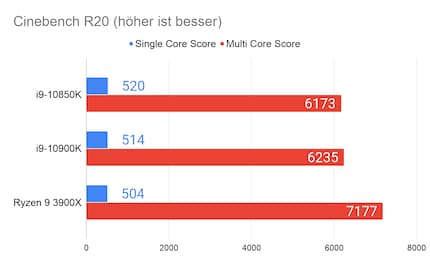
At 4.9 GHz – 200 MHz more than with turbo – on all ten cores, I reached the end of the road with the Noctua cooler: I measured 94° Celsius with HWiNFO64. This meant I achieved a score of 6235.
If you'd like to overclock the i9-10850K, you'll need good cooling like you do with the i9-10900K. A potent AIO or custom water cooling is a must. But even without the part you want to overclock, you still have to ensure sufficient cooling in your system. A premium fan is the minimum requirement.
CPU-Z
Using the CPU-Z benchmark, the i9-10850K achieved almost identical figures to the 10900K. Both scored 586 single core points. The multi core scores were separated by barely a point. In percentage terms, we're talking 0.01%. Compared to the Ryzen 3900X with its 12 cores, the 10-core i9-10850K scored 13% less on the multi-core figure, but pulled out around a 10% single-core lead.
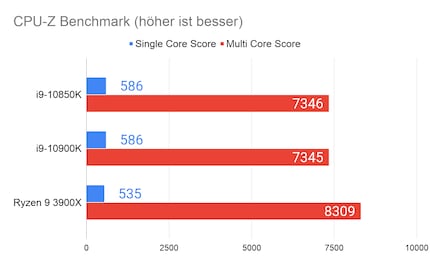
7-Zip
In the integrated 7-Zip benchmark – I chose the standard 32 MB «dictionary size» – the 10850K achieved 87,408 instructions per second (MIPS). That's 600 more instructions than the older sibling 10900K. The Ryzen 3900X manages around 20% more MIPS, which is more due to the two additional cores.
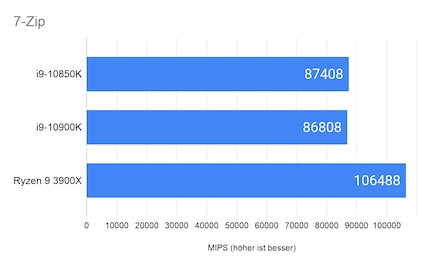
Blender BMW27
In Blender, the more expensive i9-10900K moved clearly ahead of the i9-10850K for the first time. The benchmark recorded the more expensive model as 8% faster. In comparison to the Ryzen, the 10850K sat 14% behind.
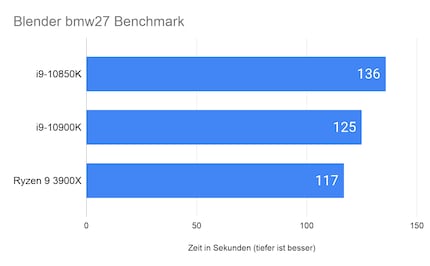
HandBrake
The i9-10850K also lagged behind the i9-10900K and 3900X in HandBrake. The 10850K encoded the 88-second, 645 MB 4K trailer for «The Dark Knight Rises» around 4% slower with HandBrake's «Fast 1080p30» preset. That increased to 9% when compared to the 3900X.
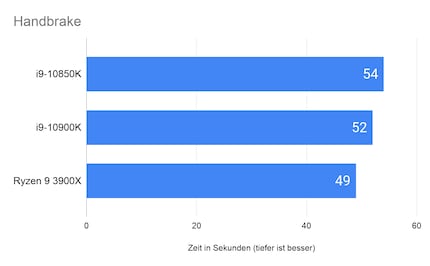
Photoshop
I ran different workloads on Puget Systems' Photoshop benchmark. You'll find more information here. At the end, the benchmark calculated a score based on a reference workstation. That score was 1,000 points. Our test bench didn't achieve this score with any of the processors, even though the CPUs are newer. The poorer results of the Intel processors and the 3900X can be explained by the reference workstation having 64 GB RAM compared to the test bench's lowly 16.
The benchmark ranked the 10850K around 5% worse than the 10900K and around 1% worse than the 3900X.
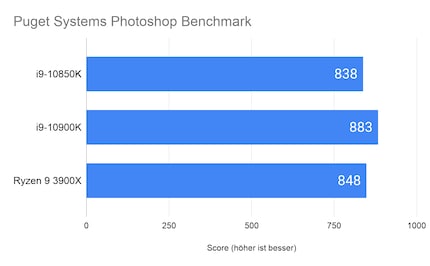
PCMark 10
The PCMark 10 benchmark tests a range of scenarios like app loading times, the efficiency of spreadsheet calculations, browsing and photo and video editing and then calculates a score. The results showed that the 10850K performed barely 3% better than the 3900X. The test CPU was around 2% behind the 10900K.
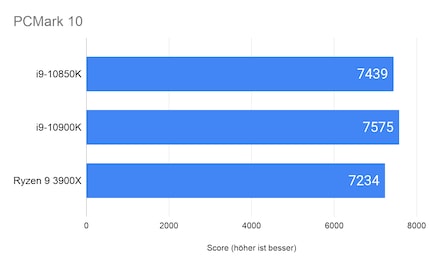
Fire Strike, Fire Strike Ultra, Time Spy and Time Spy Ultra
These synthetic game benchmarks provided a first glimpse of in-game performance. I haven't provided the overall score calculated from the results of the graphics card and CPU. This is because the GPU value was inconsistent, showing a difference of over 1,000 points.
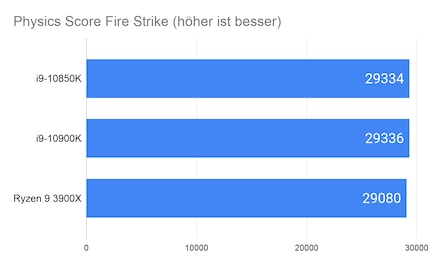
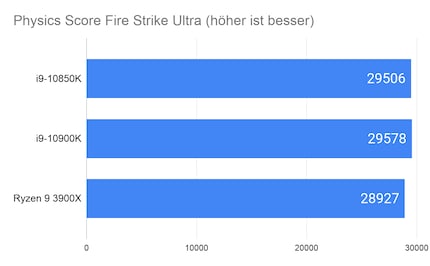
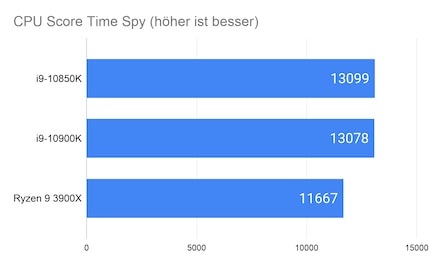
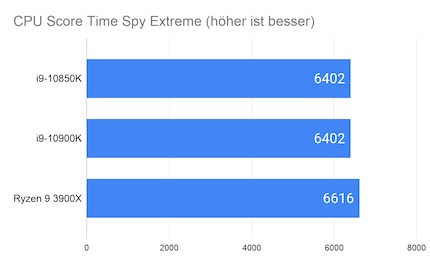
On average, the i9-10850K and 10900K are separated by a mere 13 points. That's not even 0.01%. The Intel processors only had to admit defeat to the Ryzen 9 3900X in Time Spy Extreme. They outperformed the 3900X by around 3% across all four benchmarks
The games
Alongside the average fps, I've provided the timeframe for the games in percentiles: 99 and 99.9. The percentile values are usually frametimes measured in milliseconds. These are the time intervals from image to image, or frame to frame. The percentile values ignore statistical outliers. 99th percentile means that 99% of all data is faster than the value provided. If a value shows as 95 fps in the graphic, 99% runs at a higher frame rate than 95 fps. Exactly 1% runs slower than 95 fps. It's the same at the 99.9th percentile. For a better comparison, the results of frametimes in milliseconds have been converted to conventional fps values.
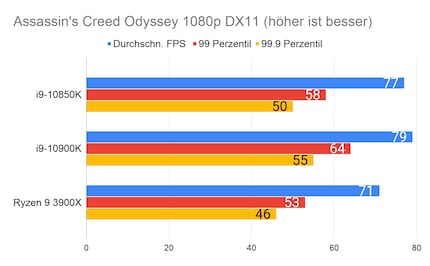
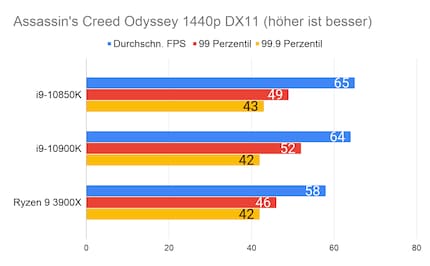
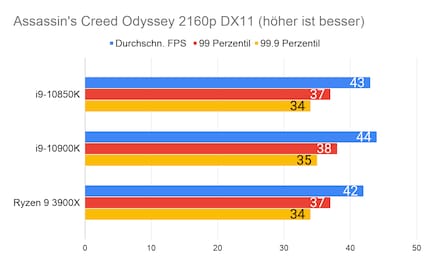
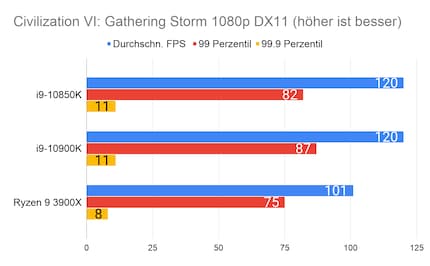
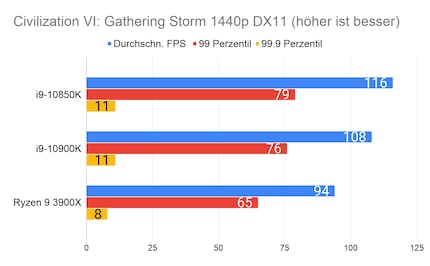
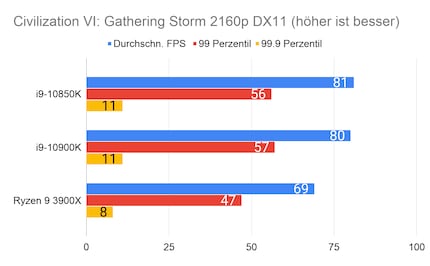
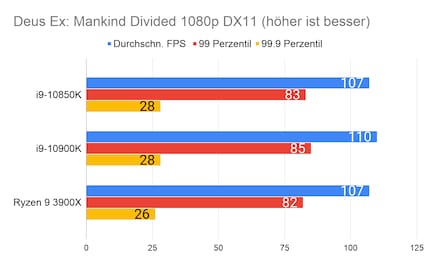
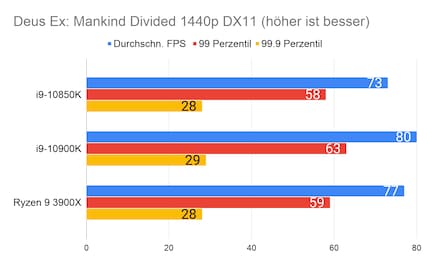
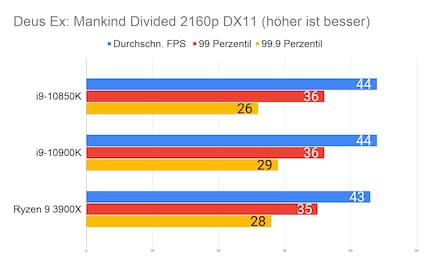
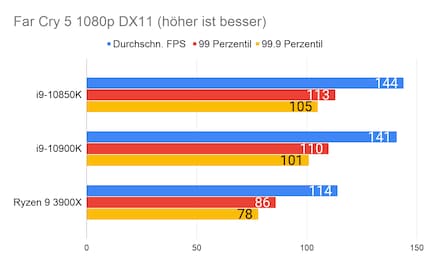
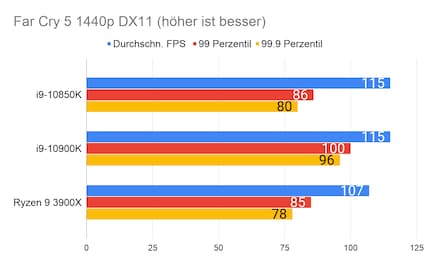
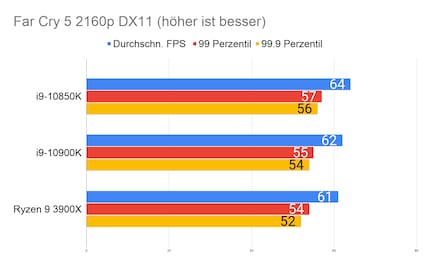
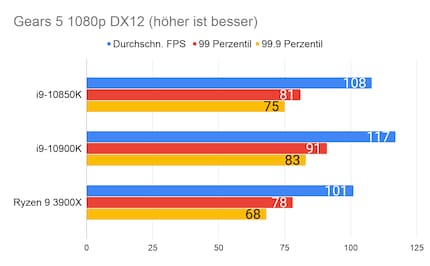
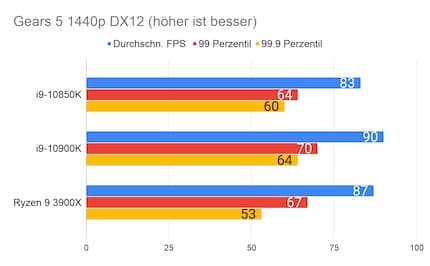
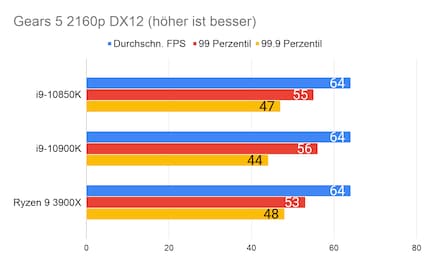
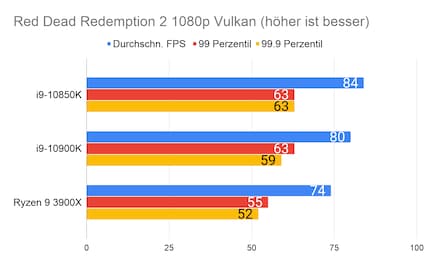
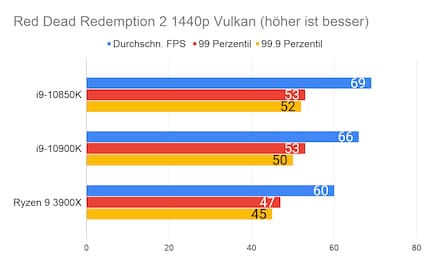
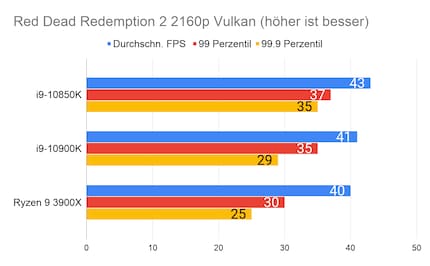
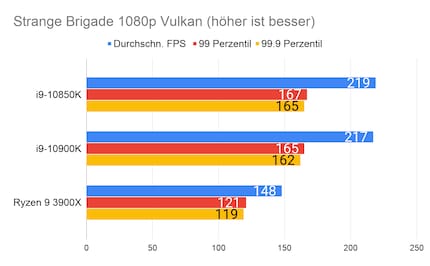
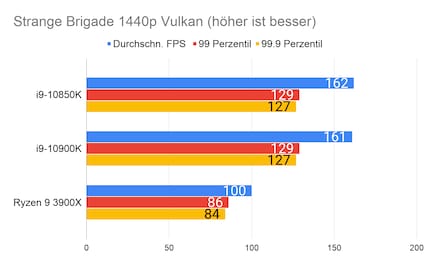
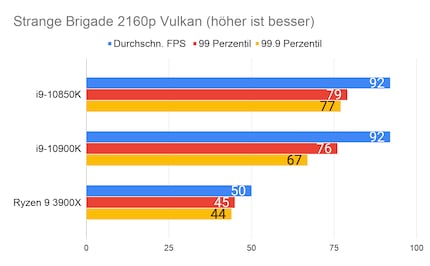
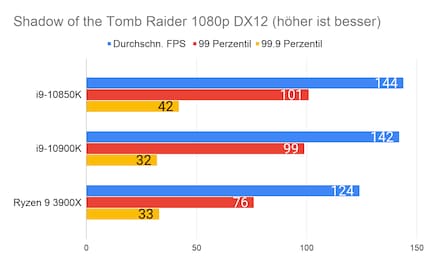
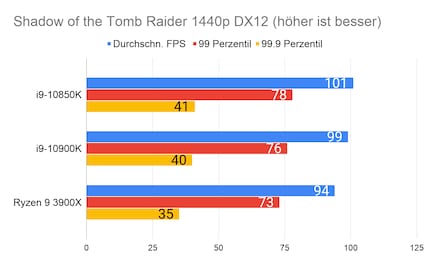
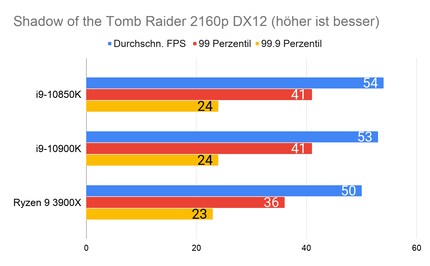
When it comes to gaming, the 10850K can certainly keep up with the 10900K. Both processors are equal in 2160p. Even in 1080p, the difference is minor at 7 fps or 5%. This drops to just 3% in 1440p. Both Intel processors performed better than the Ryzen 3900X. The difference between the 10850K and the 3900X was 11% in 1080p and 13% in 2160p across all of the games. The big differences are mainly due to «Strange Brigade», which ran better with the intel processors. I've already addressed this in my [review of the i9-10900K](in German)(/de/page/intel-core-i9-10900k-der-letzte-seiner-art-16383).
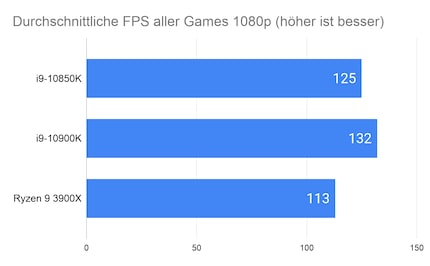
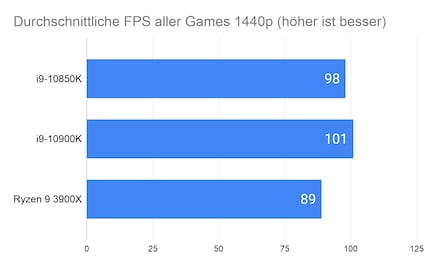
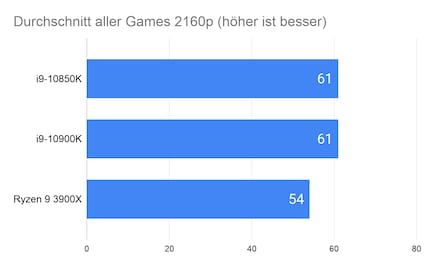
Verdict: the more affordable and above all available gaming number one
The i9-10850K is only just behind its older sibling the i9-10900K when it comes to games. If you're playing in 2160p, the processors are actually on a par. And the 10850K can even keep up with applications. The fact that it's also 11% cheaper – and, even more crucially, available – makes it a strong recommendation for these purposes.
However, if you just need the CPU for gaming, you won't have to dip so deep into your piggy bank. In [my review](in German)(/de/page/der-heimliche-gaming-king-i5-10600k-16425), the i5-10600K came out better than the i9-10850K in both 1080p and 1440p.
If you're not into gaming, but you use apps that benefit from multiple cores, the Ryzen 3900X is your best option. Its two additional cores result in better performance and it costs around 30 francs less.
From big data to big brother, Cyborgs to Sci-Fi. All aspects of technology and society fascinate me.


